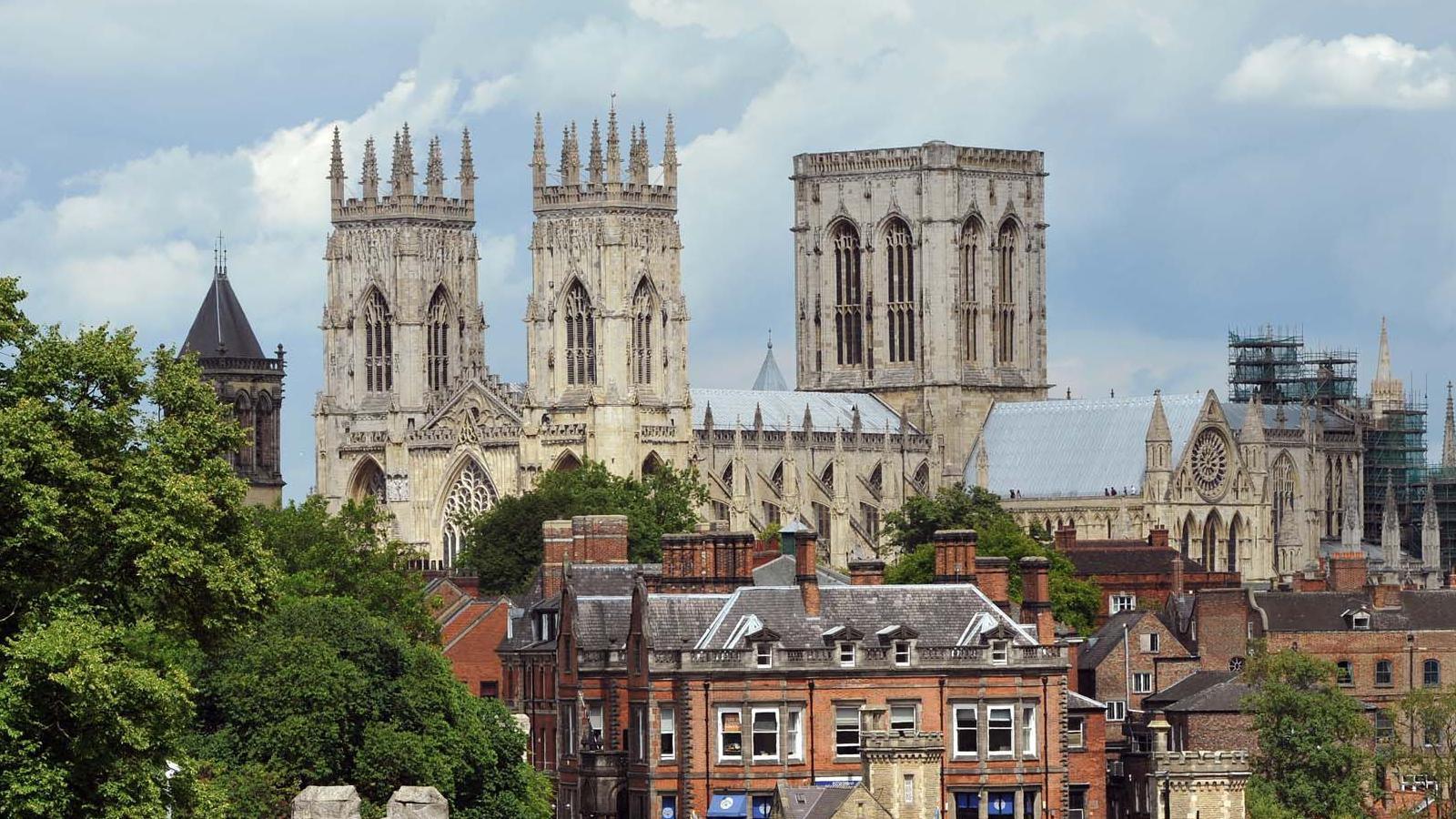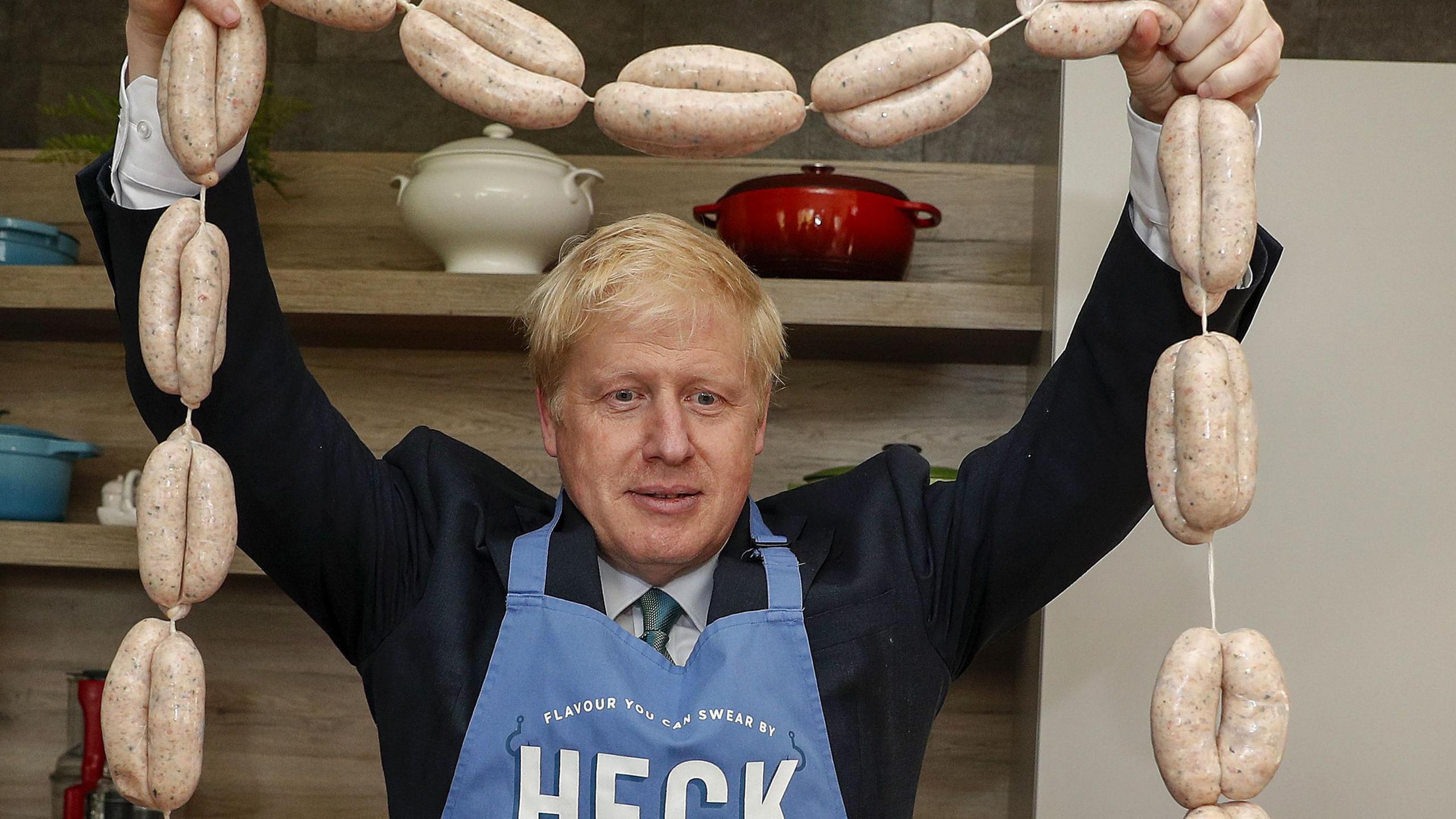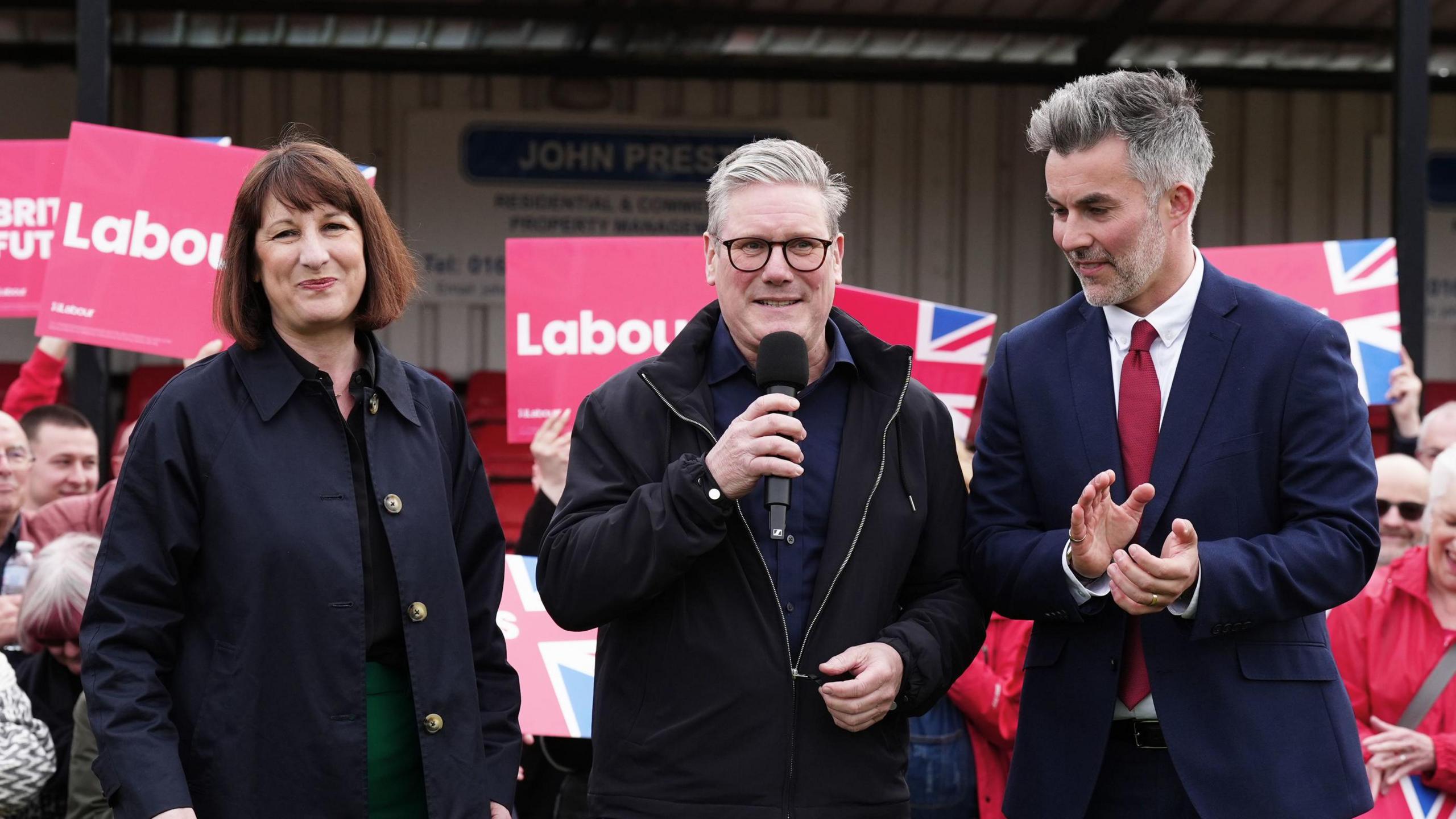Will Yorkshire be a key election battleground?

Voters across Yorkshire may have a big say in who forms the next government
- Published
On a damp Wednesday in London, Prime Minister Rishi Sunak - a Yorkshire MP - called a summer General Election.
Mr Sunak's constituency county is often seen as a key battleground by politicians of all colours.
Former Prime Minister Theresa May launched her manifesto in Halifax in 2017, while Boris Johnson made a pledge for 20,000 more police officers in West Yorkshire in 2019.
So why is Yorkshire such a vital location on the campaign trail? And what role will the county have over the next six weeks as election fever kicks in?
2019: The Red Wall crumbles
The 2019 general election saw the Conservatives win by a landslide 80 seats, and back then some commentators were talking about a decade of Conservative rule under Boris Johnson.
The election was historic in many ways as seats across the North - so-called Red Wall seats held by Labour for generations - turned blue, and many of those were in Yorkshire.
Places like Don Valley, Rother Valley, Maltby and Wakefield all switched, with it partly put down to Brexit and a clear stance by Mr Johnson to "get it done".
Labour point to former leader Jeremy Corbyn, who failed to win the backing of some voters.

Former Prime Minister Boris Johnson visited Heck Sausages in North Yorkshire while campaigning to be party leader in 2019
Fast forward to 2024 and these seats which backed the Conservatives are a must-win for both parties.
Matthew Flinders, Professor of Politics at the University of Sheffield, said: "In 2019 lots of people voted out of a basic belief in Boris Johnson, not the Conservative party.
"So without Johnson and what has happened subsequently, a large number of those voters are either going to go back to the Labour party's traditional roots or some of them might go to the Reform party - which will make it even worse for the Conservatives."
Which are the swing seats?
The region is home to several bellwether seats such as Colne Valley, Keighley and Ilkley.
These constituencies tend to return MPs of the same party, which goes on to form the overall government.
Take Keighley - it was won in 1983 by Conservative Gary Waller, and Ann Cryer took the seat in 1997 as part of the huge Labour landslide under Tony Blair.
In 2010 it was back in Conservative hands with Kris Hopkins.
It turned red in 2017 with John Grogan and back to Conservative Robbie Moore in 2019.
It is one Labour will be watching closely - but they will have to go much further if they want a majority in the House of Commons.
Mr Flinders says if you look at the polling, many Conservative seats with small majorities look vulnerable.
He pointed to Rother Valley and Don Valley in South Yorkshire, which have slim majorities.
Local issues could play out nationally
One potential problem for Labour, which played out at the local elections, is the backing and trust of Muslim voters.
Areas such as Batley, Dewsbury and Bradford saw support for Labour drop as they elected independent candidates, with this partly put down to Labour’s national stance on Gaza.
In 58 local council wards analysed by the BBC nationally, where more than one-in-five residents identify as Muslim, Labour's share of the vote was 21% down on 2021.
Labour's Ellie Reeves, deputy campaign co-ordinator, admitted it had "a lot of work to do" to rebuild support before the General Election, including ensuring voters "understand our position".
For the Conservatives, the local elections also brought some surprising results.
North Yorkshire, which is normally home to some of the safest Conservative seats in the country, returned a Labour mayor.

David Skaith (r), the first ever York and North Yorkshire Mayor, was elected in early May
Could boundary changes affect results?
The 2024 election will not be fought on the same boundaries as in 2019.
The electoral map of England was redrawn to reflect population shifts and the government's aim that all Parliamentary constituencies contain roughly the same number of electors.
Under the Boundary Commission for England's proposals, England will have 10 additional House of Commons seats overall once the changes have come into effect.
In Yorkshire and the Humber, there is no change in the number of seats – the area will still return 54 MPs.
But the boundaries of some of those seats will change.
Labour-leaning Crossland Moor and Netherton - formerly part of the Colne Valley constituency - have moved to Huddersfield.
The Pudsey seat in Leeds disappears altogether – and brought into a new constituency called Leeds West and Pudsey.
In North Yorkshire a new constituency has been created which spans the A1 – Wetherby and Easingwold.
So the impact of changing constituency boundaries and moving voters from one place to another could affect what happens at the election.
Follow BBC Yorkshire on Facebook,, external X (formerly Twitter),, external and Instagram., external Send your story ideas to yorkslincs.news@bbc.co.uk